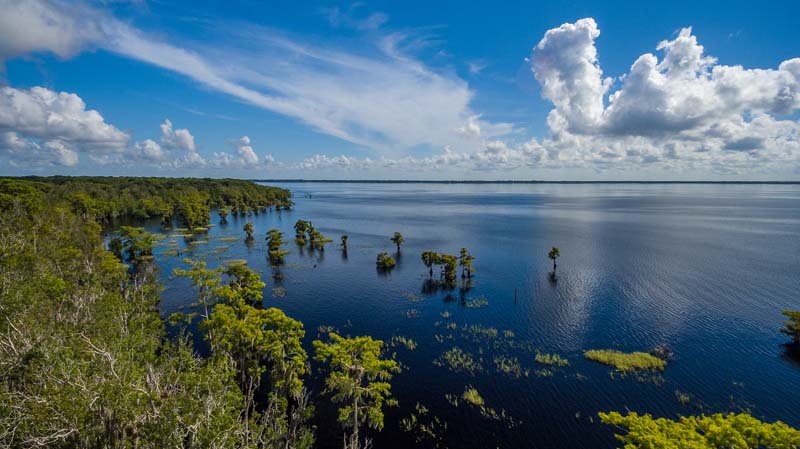Indian River County Commissioners have set a public hearing for Jan. 8 to add another six months onto a moratorium on biosolids, treated human waste used as fertilizer, after hearing study results at their Dec. 11 meeting.
The countywide moratorium enacted six months ago was intended to give the county time to figure out if nutrient overload in the once pristine Blue Cypress Lake was coming from biosolids.
The lake suffered a massive blue-green algae bloom during the summer fed by the types of nutrients contained in human waste.
A study conducted by Jones Edmunds & Associates has confirmed biosolids are the source of pollution. The study also makes plain how little protection the state Department of Environmental Protection provides in its permitting and monitoring of biosolids.
South Florida government officials convinced the state legislature to ban biosolids in 2012 for the Lake Okeechobee, St. Lucie River and Caloosahatchee River watersheds, bypassing the DEP. Since that ban went into effect, more biosolids have flowed north to Indian River County.
Southern cities and counties that have human waste they have to dispose of pay haulers and farmers to take it off their hands, much of it ending up on fields near Blue Cypress Lake.
Indian River County disposes of biosolids generated here at its landfill, making it especially annoying to commissioners that they will have to pay to clean up pollutants brought from the south, since it appears unlikely the DEP will take responsibility for its lack of regulation.
The DEP does not require soil testing more often than every five years on fields where biosolids are dumped. It does not require groundwater be sampled, only surface water. And it only measures for total nitrogen, not total phosphorus.
These loose regulations allow massive biosolids application, which is profitable to farmers and haulers, and helps solve a problem for South Florida municipalities.
County Commissioner Peter O’Bryan summarized DEP’s lack of oversight as a “regulatory disconnect.”
The phosphorus level has skyrocketed in Blue Cypress Lake, the study showed, the soil full up and unable to absorb any more. The excess phosphorus is carried by ground and surface water into the lake, where it fed the blue-green algae bloom over the summer.
Ocean Research and Conservation Association chief scientist Eddie Widder has been monitoring conditions in the lake and she shared some of her data on the toxin given off by the blue-green algae.
Some lake water measured 4,700 parts per billion of toxin at the height of the bloom. The Centers for Disease Control states 10 parts per billion is dangerous.
“I wouldn’t eat any fish from Blue Cypress Lake,” Widder said.
“This is a problem that goes way beyond the lake,” she continued. “Blue Cypress Lake is a good case study because nothing else is out there – no development and no change in land use – so the cause is easier to pinpoint to the only new thing introduced, biosolids.”
She said the cyanotoxins given off by blue-green algae are “getting into our food supply.”
Studies have correlated an increase in liver disease, including liver cancer, in areas with recurring blue-green algae blooms.
Commissioners vowed to follow in the footsteps of South Florida governments and seek a legislative ban on biosolids in local watersheds, bypassing the DEP. Commissioner Bob Solari said state Rep. Erin Grall will soon introduce legislation to that effect.
Staff was directed to ask the City of Fellsmere to also extend its biosolids ban another six months and to ask Osceola County to consider joining the effort to ban biosolids on a permanent basis.

